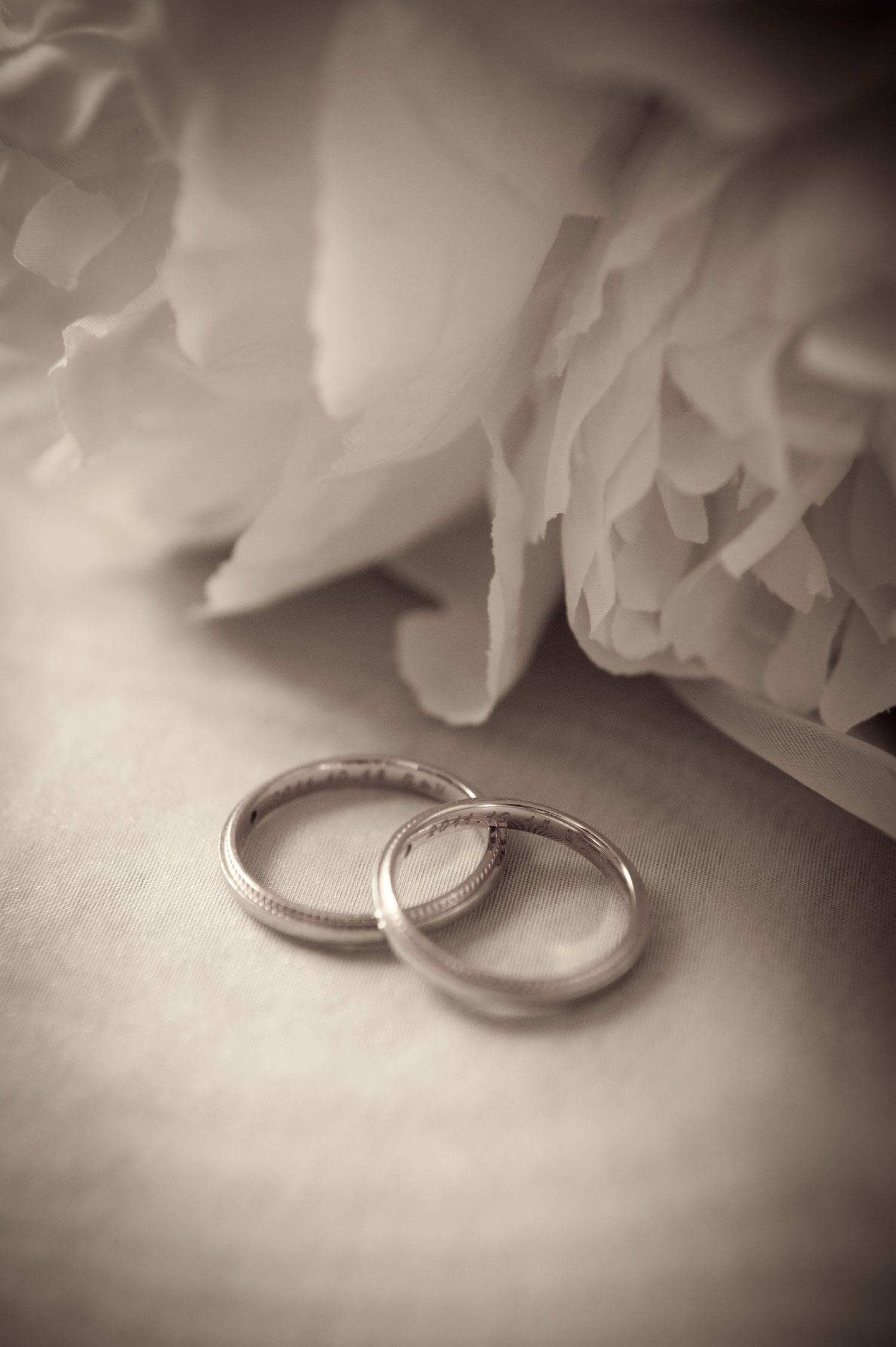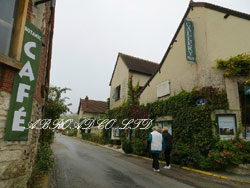is iodine a cation or anion
2) What is the chemical symbol of the noble gas this ion is isoelectronic wi, Which of the following elements is most likely to form a cation? 3.5: Ionic Bonding: Using the Periodic Table to Predict Main Group Ion Charges is shared under a not declared license and was authored, remixed, and/or curated by LibreTexts. a. N b. Ca c. Al d. Se, What is the identity of the element X in the following ions? Does iodine form a cation or a anion? How many ions of each type (cation, anion) are in M g A l 2 O 4 ? Which positive ion (cation) has the smallest radius? Is it a cation or an anion? Furthermore, since all subsequent procedural steps are dependent on that initial valence electron count,all elements in the same group will gain or lose the same number of electrons to achieve an octet configuration. How many ions of each type (cation, anion) are in B a T i O 3 ? What is the ionic charge when iodine forms an ion? What is the ionic charge when selenium forms an ion? If the atom loses one or more electrons , it will become a cation ( positively charged ion) Ex: Na atom ( Z =11) Number of protons = number of electrons = 11 Answered: Complete the following table: Cation | bartleby In the second row, write the symbol for the ion that an atom of barium is mostly likely to form and then decide what type of ion it is. Ions are identified by a superscript that shows the sign and size of the electric charge - for example Ca +2. a. View Answer. Nitrogens position in the periodic table (group 15) reveals that it is a nonmetal. Note the usefulness of the periodic table in predicting likely ion formation and charge (Figure \(\PageIndex{2}\)). Iodide ion, as found in sodium iodide, can also be oxidized by concentrated household bleach to facilitate EAS as well. Get access to this video and our entire Q&A library. a. What simple ion does each of the following elements most commonly form? Metallic atoms hold some of their electrons relatively loosely. silver (Ag) loses one electron to become Ag+, whilst zinc (Zn) loses two electrons to become Zn2+. Phosphorus anion | P- - PubChem What ion is the most likely? During the formation of some compounds, atoms gain or lose electrons, and form electrically charged particles called ions(Figure \(\PageIndex{1}\); Video \(\PageIndex{1}\)). Harper, P.V. Answer. So it becomes solvable in non-polar solvent CCl4. 1. In rechargeable batteries, such as many lithium-ion batteries, this chemical process is reversible and the internal structure different which allows the batteries to be recharged. Keywords. Ionic properties can be exploited by chemists for a range of purposes. Ions are atoms or molecules which have gained or lost one or more valence electrons, giving the ion a net positive or negative charge. What ion is potassium most likely to form? Example \(\PageIndex{1}\): Composition of Ions. Which neutral atom has the same number of electrons as a Ca2+ ion? Which of the following ions is isoelectronic? Charges of Uranium ions: 3+, 4+, 6+ Free Gift for you: Interactive Periodic Table. The major form of thyroid hormone in the blood is thyroxine (T4), which has a longer half-life than T3. The number of electrons gained, and so the charge of the ion, is indicated after the chemical symbol, e.g. H hydrogen H hydride ion . What neutral atom is isoelectronic with the Ca2+ ion? Does strontium form a cation or anion? Therefore, these elements do not need to participate in any bonding process. a) -1 b) 1 c)-2 d) 2. [130] Parenteral use of iodine-based contrast agents (see above) can cause reactions ranging from a mild rash to fatal anaphylaxis. Iodide/triiodide redox shuttle-based additives for high-performance What is the chemical symbol for the ion? Ions are atoms or molecules which have gained or lost one or more valence electrons, giving the ion a net positive or negative charge. In ordinary chemical reactions, the nucleus of each atom remains unchanged. What ion is formed when a barium atom achieves an octet? Other polyatomic ions are negatively charged. Complete the following table: Cation Formula Anion Formula Compound Formula Cu+ 0- Co+ Cr+ F Br. The most important sources of natural iodine are the oceans. The typical adult dose is one 130mg tablet per 24 hours, supplying 100mg (100,000 micrograms) of ionic iodine. A magnesium atom must lose two electrons to have the same number electrons as an atom of the previous noble gas, neon. (a) Rb (b) K (c) S (d) Fr. The Difference Between a Cation and an Anion - ThoughtCo "Cation" vs. "Anion" - What's The Difference? | Dictionary.com By measuring with a spectroscopic Doppler-free technique while focusing on one of these lines, the hyperfine structure of the iodine molecule reveals itself. Because they have opposite electrical charges, cations and anions are attracted to each other. 2. PubChem . Iodine cation or anion - jbuy.pizzeria-kandel.de What ion is strontium most likely to form? Atoms of metallic elements tend to lose their valence electrons. This ion is a(n) {Blank}. Holleman, A. F.; Wiberg, E. "Inorganic Chemistry" Academic Press: San Diego, 2001. A neutrally charged atom is an atom that has an equal number of protons and electrons. Cations Anions Table - Houston Community College Students enrolled in Dr. Draganjac's Introduction to Chemistry (CHEM1003), General Chemistry I (CHEM1013) and General Chemistry II (CHEM1023) classes are responsible for learning the names and formulae for the common acids and common reagents and for learning the names, . This compound is prepared by iodine and mixing potassium hydroxide. Perfluoroalkyl iodides are precursors to important surfactants, such as perfluorooctanesulfonic acid.[96]. Therefore, it would not make sense to ask for the ions found in carbon dioxide. Element Symbols & Names Anions Acids Polyatomic Anions . b. An element is never an ion. Is aluminum a cation or an. Is iodine ionic or covalent? The classification of an element helps us determine its tendency to form a cation or anion. Direct contact with skin can cause damage, and solid iodine crystals should be handled with care. Iodine is a nonmetallic, nearly black solid at room temperature and has a glittering crystalline appearance. The zinc anode also acts as the batterys container in zinc-carbon batteries so as it oxidizes during use, the contents can start to leak over time. when an atom of the element lose or gain one or more electrons it will become an ion. An atomic cation with a charge of +1 has the following electron configuration: (Ar) 4s^2 3d^{10} 4p^1. Unfortunately, these processes were quite lengthy. The cations of the nine strong bases and the anions of the five strong acids form neutral ions in aqueous solutions. Is fluorine ion cation or anion? - ElegantQuestion.com An iodine is an anion, or a negatively charged ion. Formula: I 2-Molecular weight: 253.80949; Information on this page: Notes; Other data available: Gas phase thermochemistry data; Options: Switch to calorie-based units; Notes. What neutral atom is isoelectronic with the Sn4+ ion? We also acknowledge previous National Science Foundation support under grant numbers 1246120, 1525057, and 1413739. It is present in seawater, but sparingly, as the iodide ion, I , to the extent of approximately 50 mg per metric ton (0.0016 ounce per ton) of seawater. Information processing, fine motor skills, and visual problem solving are improved by iodine repletion in moderately iodine-deficient children. [108] This upper limit was assessed by analyzing the effect of supplementation on thyroid-stimulating hormone. For an anion to form, one or more electrons must be gained, typically pulled away from other atoms with a weaker affinity for them. [122] Iodine deficiency is also a problem in certain areas of Europe. [106] The toxicity derives from its oxidizing properties, through which it denaturates proteins (including enzymes). Neutral Cations and Anions - Table 20.3 Flashcards | Quizlet Data from NIST Standard Reference Database 69: NIST Chemistry WebBook; The efficiency is high and energy dispersive spectroscopy is possible, but the resolution is rather poor. [133][132] As with all medications, the patient's allergy history should be questioned and consulted before any containing iodine are administered. The question that you are asking comes into play when you use a metallic salt, which upon heating disassociates into metal cations and nonmetalic anion atoms or groups. A carbon dioxide molecule only has atoms! It has a role as a human metabolite. Moving from the far right to the left on the periodic table, elements often form anions with a negative charge equal to the number of groups moved left from the noble gases. What ion is iodine most likely to form? Is this a cation or an anion do not have an increased risk for a contrast medium hypersensitivity. a) Mg^{2+} \\ b) Ne^+ \\, What is the electron configuration for the Ca^2+ ion (calcium ion)? [85], In the alternative, iodine may be produced from iodophors, which contain iodine complexed with a solubilizing agent (the iodide ion may be thought of loosely as the iodophor in triiodide water solutions). Another significant use is a catalyst for the production of acetic acid by the Monsanto and Cativa processes. (Lanthanum and the other lanthanides, as well as tungsten with Z = 74 and uranium with Z = 92, are used by a few microorganisms. What are Anions? (with pictures) - All the Science (c) S. (d) Na. Sodium b. Iodine c. Potassium d. Calcium e. Sulfur f. Magnesium g. Aluminum h. Nitrogen, What is the ionic charge for the tin ion in SnS2? [92][93], Iodine-131 (usually as iodide) is a component of nuclear fallout, and is particularly dangerous owing to the thyroid gland's propensity to concentrate ingested iodine and retain it for periods longer than this isotope's radiological half-life of eight days. The electrostatic attraction between the positives and negatives brings the particles together and creates an ionic compound, such as sodium chloride. Because the number of protons remains unchanged when an atom forms an ion, the atomic number of the element must be 13. Flame Test: Cation or Anion? | Physics Van | UIUC If a balanced atom gains one or more electrons, it will become a negatively charged anion. As an element with high electron density and atomic number, iodine absorbs X-rays weaker than 33.3keV due to the photoelectric effect of the innermost electrons. These are further processed by decarboxylation and deiodination to produce iodothyronamine (T1a) and thyronamine (T0a'). Therefore, these elements are energetically-disqualified from ionizing. What is the formula of the ion? What monatomic ions do barium (Z - 56) and selenium (Z - 34) form? Iodine is never found in nature uncombined, and it is not concentrated sufficiently to form independent minerals. Write the symbol for each ion and name them. What is the formula of barium bromide? Cation/ Anion List - Arkansas State University [113][114], As of 2000, the median intake of iodine from food in the United States was 240 to 300g/day for men and 190 to 210g/day for women. Excess iodine can be more cytotoxic in the presence of selenium deficiency. For example, in NaCl, the sodium atom acts as the cation, while the chlorine atom acts as the anion. Is this a cation or an anion? Fuse School, Open Educational Resource free of charge, under a Creative Commons License: Attribution-NonCommercial CC BY-NC (View License Deed. [80] Aqueous alkaline iodine solution is used in the iodoform test for methyl ketones. The gain of one or more electrons What is an Cation? Updated on July 03, 2019 Cations and anions are both ions. Sodium chloride is pretty neat, with just two elements. What monatomic ions do strontium (Z = 38) and phosphorus (Z = 15) form? An ion with a net negative charge. This solution is then reacted with freshly extracted iodate, resulting in comproportionation to iodine, which may be filtered off. Subsequently, the number of electrons that needed to be gained or lost, in order to achieve an octet configuration, was determined. What ion is fluorine most likely to form? However, if they are not balanced, they will be charged. { "3.01:_Bonding_Introduction" : "property get [Map MindTouch.Deki.Logic.ExtensionProcessorQueryProvider+<>c__DisplayClass228_0.b__1]()", "3.02:_Ionic_Intro" : "property get [Map MindTouch.Deki.Logic.ExtensionProcessorQueryProvider+<>c__DisplayClass228_0.b__1]()", "3.03:_Cations" : "property get [Map MindTouch.Deki.Logic.ExtensionProcessorQueryProvider+<>c__DisplayClass228_0.b__1]()", "3.04:_Anions" : "property get [Map MindTouch.Deki.Logic.ExtensionProcessorQueryProvider+<>c__DisplayClass228_0.b__1]()", "3.05:_Ionic_Bonding:__Periodic_Table_Shortcut" : "property get [Map MindTouch.Deki.Logic.ExtensionProcessorQueryProvider+<>c__DisplayClass228_0.b__1]()", "3.06:_Writing_Formulas_for_Ionic_Compounds" : "property get [Map MindTouch.Deki.Logic.ExtensionProcessorQueryProvider+<>c__DisplayClass228_0.b__1]()", "3.07:_Ionic_Bonding:__Writing_Chemical_Formulas_and_Chemical_Names" : "property get [Map MindTouch.Deki.Logic.ExtensionProcessorQueryProvider+<>c__DisplayClass228_0.b__1]()", "3.08:_Transition_Metals" : "property get [Map MindTouch.Deki.Logic.ExtensionProcessorQueryProvider+<>c__DisplayClass228_0.b__1]()", "3.09:__Ionic_Bonding:__Writing_Chemical_Formulas_of_Ionic_Compounds_Containing_Transition_Metals" : "property get [Map MindTouch.Deki.Logic.ExtensionProcessorQueryProvider+<>c__DisplayClass228_0.b__1]()", "3.10:__Ionic_Bonding:__Writing_Chemical_Names_of_Ionic_Compounds_Containing_Transition_Metals" : "property get [Map MindTouch.Deki.Logic.ExtensionProcessorQueryProvider+<>c__DisplayClass228_0.b__1]()", "3.11:_Polyatomic_Ions" : "property get [Map MindTouch.Deki.Logic.ExtensionProcessorQueryProvider+<>c__DisplayClass228_0.b__1]()", "3.12:__Ionic_Bonding:__Writing_Chemical_Formulas_Polyatomic_Ions" : "property get [Map MindTouch.Deki.Logic.ExtensionProcessorQueryProvider+<>c__DisplayClass228_0.b__1]()", "3.13:__Ionic_Bonding:__Writing_Chemical_Names_of_Ionic_Compounds_Containing_Polyatomic_Ions" : "property get [Map MindTouch.Deki.Logic.ExtensionProcessorQueryProvider+<>c__DisplayClass228_0.b__1]()", "3.14:_Covalent_Introduction" : "property get [Map MindTouch.Deki.Logic.ExtensionProcessorQueryProvider+<>c__DisplayClass228_0.b__1]()", "3.15:_Covalent_Lewis_Structures" : "property get [Map MindTouch.Deki.Logic.ExtensionProcessorQueryProvider+<>c__DisplayClass228_0.b__1]()", "3.16:_Covalent_Lewis_Structures-_Electrons_Shared" : "property get [Map MindTouch.Deki.Logic.ExtensionProcessorQueryProvider+<>c__DisplayClass228_0.b__1]()", "3.17:_Naming_Molecular_Compounds" : "property get [Map MindTouch.Deki.Logic.ExtensionProcessorQueryProvider+<>c__DisplayClass228_0.b__1]()", "3.18:_Exceptions_to_the_Octet_Rule" : "property get [Map MindTouch.Deki.Logic.ExtensionProcessorQueryProvider+<>c__DisplayClass228_0.b__1]()", "3.19:__Covalent_Bonding:__Exceptions_to_the_Octet_Rule" : "property get [Map MindTouch.Deki.Logic.ExtensionProcessorQueryProvider+<>c__DisplayClass228_0.b__1]()", "3.20:_Diatomics" : "property get [Map MindTouch.Deki.Logic.ExtensionProcessorQueryProvider+<>c__DisplayClass228_0.b__1]()", "3.21:_Multiple_Bonds" : "property get [Map MindTouch.Deki.Logic.ExtensionProcessorQueryProvider+<>c__DisplayClass228_0.b__1]()", "3.22:_Predicting_the_Shapes_of_Molecules" : "property get [Map MindTouch.Deki.Logic.ExtensionProcessorQueryProvider+<>c__DisplayClass228_0.b__1]()" }, { "00:_Preface-_The_Chemical_World" : "property get [Map MindTouch.Deki.Logic.ExtensionProcessorQueryProvider+<>c__DisplayClass228_0.b__1]()", "01:_Measurement_and_Problem_Solving" : "property get [Map MindTouch.Deki.Logic.ExtensionProcessorQueryProvider+<>c__DisplayClass228_0.b__1]()", "02:_Atoms_and_Elements" : "property get [Map MindTouch.Deki.Logic.ExtensionProcessorQueryProvider+<>c__DisplayClass228_0.b__1]()", "03:_Molecules_and_Compounds" : "property get [Map MindTouch.Deki.Logic.ExtensionProcessorQueryProvider+<>c__DisplayClass228_0.b__1]()", "04:_Quantities_in_Chemical_Reactions" : "property get [Map MindTouch.Deki.Logic.ExtensionProcessorQueryProvider+<>c__DisplayClass228_0.b__1]()", "05:_Matter_and_Energy" : "property get [Map MindTouch.Deki.Logic.ExtensionProcessorQueryProvider+<>c__DisplayClass228_0.b__1]()", "06:_Gases" : "property get [Map MindTouch.Deki.Logic.ExtensionProcessorQueryProvider+<>c__DisplayClass228_0.b__1]()", "07:_Solutions" : "property get [Map MindTouch.Deki.Logic.ExtensionProcessorQueryProvider+<>c__DisplayClass228_0.b__1]()", "08:_Acids_and_Bases" : "property get [Map MindTouch.Deki.Logic.ExtensionProcessorQueryProvider+<>c__DisplayClass228_0.b__1]()", "09:_Nuclear_Chemistry" : "property get [Map MindTouch.Deki.Logic.ExtensionProcessorQueryProvider+<>c__DisplayClass228_0.b__1]()", "10XX:_Introduction_to_Organic_Chemistry" : "property get [Map MindTouch.Deki.Logic.ExtensionProcessorQueryProvider+<>c__DisplayClass228_0.b__1]()" }, 3.5: Ionic Bonding: Using the Periodic Table to Predict Main Group Ion Charges, https://chem.libretexts.org/@app/auth/3/login?returnto=https%3A%2F%2Fchem.libretexts.org%2FCourses%2FHeartland_Community_College%2FCHEM_120%253A_Fundamentals_of_Chemistry%2F03%253A_Molecules_and_Compounds%2F3.05%253A_Ionic_Bonding%253A__Periodic_Table_Shortcut, \( \newcommand{\vecs}[1]{\overset { \scriptstyle \rightharpoonup} {\mathbf{#1}}}\) \( \newcommand{\vecd}[1]{\overset{-\!-\!\rightharpoonup}{\vphantom{a}\smash{#1}}} \)\(\newcommand{\id}{\mathrm{id}}\) \( \newcommand{\Span}{\mathrm{span}}\) \( \newcommand{\kernel}{\mathrm{null}\,}\) \( \newcommand{\range}{\mathrm{range}\,}\) \( \newcommand{\RealPart}{\mathrm{Re}}\) \( \newcommand{\ImaginaryPart}{\mathrm{Im}}\) \( \newcommand{\Argument}{\mathrm{Arg}}\) \( \newcommand{\norm}[1]{\| #1 \|}\) \( \newcommand{\inner}[2]{\langle #1, #2 \rangle}\) \( \newcommand{\Span}{\mathrm{span}}\) \(\newcommand{\id}{\mathrm{id}}\) \( \newcommand{\Span}{\mathrm{span}}\) \( \newcommand{\kernel}{\mathrm{null}\,}\) \( \newcommand{\range}{\mathrm{range}\,}\) \( \newcommand{\RealPart}{\mathrm{Re}}\) \( \newcommand{\ImaginaryPart}{\mathrm{Im}}\) \( \newcommand{\Argument}{\mathrm{Arg}}\) \( \newcommand{\norm}[1]{\| #1 \|}\) \( \newcommand{\inner}[2]{\langle #1, #2 \rangle}\) \( \newcommand{\Span}{\mathrm{span}}\)\(\newcommand{\AA}{\unicode[.8,0]{x212B}}\), 3.4: Ionic Bonding: Anion Formation, Symbolism, and Nomenclature, 3.6: Ionic Bonding: Writing Chemical Formulas of Ionic Compounds Containing Main Group Elements, status page at https://status.libretexts.org. Which of the following has the most subatomic particles? Which of the following element is most likely to form an ion that will then form an ionic bond with an ion of a group 1A element? Is this a cation or an anion? Is iodide an anion? - Studybuff Cations are ions with a net positive charge. Title: Microsoft Word - Cations_Anions_Table.doc Author: Steven Dessens X^-, an anion that has 36 electrons, What is the identity of the element X in the following ions? (b) A sodium cation (Na+) has lost an electron, so it has one more proton (11) than electrons (10), giving it an overall positive charge, signified by a superscripted plus sign. Knowing this lets us use the periodic table to identify the element as Al (aluminum). [21], The caliche was the main source of iodine in the 19th century and continues to be important today, replacing kelp (which is no longer an economically viable source),[76] but in the late 20th century brines emerged as a comparable source. [88] Its specific mode of action is unknown. Since chlorine is in group 17, it will form a 1- anion. One example is hydrogen, which may gain (H-) or lose (H+) an electron, forming hydride compounds such as ZnH2 (where it is an anion) and hydron compounds such as H2O (where it is a cation). 1. A monatomic ion with a charge of +2 has an electronic configuration of 1s^2 2s^22p^63s^23p^64s^23d^{10}4p^6. [123], Elemental iodine (I2) is toxic if taken orally undiluted. (a). However, there are also ionic compounds comprising more than two elements. You can read our Cookie Policy here. Finally, note that thischarge pattern only applies tomain group element ionization. Instead, they simply contain atoms intertwined by the sharing of electrons. Patients with various food allergies (shellfish, egg, milk, etc.) NaCl, for example, disassociates in aqueous solutions as Na (+) and Cl (-), it is a neutral solution. The addition of iodine to table salt has largely eliminated this problem in wealthier nations, but iodine deficiency remains a serious public health problem in the developing world today. How to find the cation and anion in a compound? However, if they are not balanced, they will be charged. What is the anion and cation of Na 2 CrO 4 ? She moved into science writing in 2017 after over a decade as a research scientist. Is this a cation or an anion? What are the 4 major sources of law in Zimbabwe. The Difference Between a Cation and an Anion. What would be the charge on iodine if it were to form an ion? In total, they can contain at least 0.02% and at most 1% iodine by mass. As establishing the number of valence electrons within the initial atom is the first step in the processes described above,the analysis ofall elements in the same group will begin identically. [118], After iodine fortification programs such as iodisation of salt have been implemented, some cases of iodine-induced hyperthyroidism have been observed (so-called Jod-Basedow phenomenon). Silver iodide is a major ingredient to traditional photographic film. b. But NaOH disassociates into Na (+) and OH (-), a very basic anion that creates a basic solution. This application is often in conjunction with advanced X-ray techniques such as angiography and CT scanning. Example \(\PageIndex{2}\): Formation of Ions. Is it a cation or an anion? Scandium - Fluorine - Sulfur - Calcium - Sodium - Explanation: When an element loses an electron in order to acquire stability then it is called a cation. A monatomic ion with a charge of -2 has an electronic configuration of 1s^2, 2s^2, 2p^6 1) Is this ion an anion or cation? Figure \(\PageIndex{1}\) shows the charge pattern for main group element ionization. a. Moving from the far left to the right on the periodic table, main-group elements tend to form cations with a charge equal to the group number. For example, a neutral calcium atom, with 20 protons and 20 electrons, readily loses two electrons. If a balanced atom loses one or more electrons, it will become a positively charged cation. Iodine forms a diatomic non-polar covalent molecule. At levels of 2 ppm, iodine is immediately dangerous to life and health. Which monatomic ions would you expect radium (z =88) and selenium (z =34) to form? a. anions of two different elements b. an anion and an atom c. cations of two different elements d. atoms of two different elements e. an anion and a cation, Which ion is expected to hydrolyze and what would the spectator ion be? Batteries have two electrodes made of conductive material, the cathode which is the positive end where the electrical current leaves/electrons enter, and the anode where the electrical current enters/ electrons leave. Thousands of kilograms of silver iodide are used annually for cloud seeding to induce rain. [96], The organoiodine compound erythrosine is an important food coloring agent. For this reason, people at risk of exposure to environmental radioactive iodine (iodine-131) in fallout may be instructed to take non-radioactive potassium iodide tablets. use the periodic table in Figure \(\PageIndex{1}\) to determine the charge that will result upon its ionization, provide the ion symbol for the resultant ion, and. Recall that the noble gases, the elements found in Group 18 or8A, are naturally stable, because they inherently possessan octet of valence electrons. 1) 0.1M NaCl 2) 0.1M Na2CO3 3)0.1M NaC2H3O2 4) 0.1M NH4Cl ) 0.1M ZnCl2 6) 0.1M KAl(SO4)2, Give the ion symbol and classify it as a cation, anion, or neutral atom. Do anions carry a positive charge? Explained by Sharing Culture Write the symbol for each ion and name them. Select one: a. provide the ion name for the resultant ion. +1 b. Phosphorus anion | P- | CID 9548888 - structure, chemical names, physical and chemical properties, classification, patents, literature, biological activities, safety/hazards/toxicity information, supplier lists, and more. These ionic compounds have special ions that consist of multiple atoms joined together. Iodine atom anion-1: I + Iodine atom cation: 1: HF-hydrogen fluoride anion-1: HF + hydrogen fluoride cation: 1: HCl-hydrogen chloride anion-1: HCl + hydrogen chloride cation: 1: HBr-hydrogen bromide anion-1: HBr + hydrogen bromide cation: 1: HI + Hydrogen iodide cation: 1: H 2 F + dihydrogen fluoride cation: 1: H 2 Cl + dihydrogen monochloride . Aluminum and carbon react to form an ionic compound. Cation and anion are the exclusive stuff of ionic compounds. A monatomic ion with a charge of +2 has an electronic configuration of 1s22s22p63s23p64s23d104p6. [75] Sodium iodate is extracted from the caliche and reduced to iodide by sodium bisulfite. c. What is the formula of the ion? Consequently, all elements in the same group will form ions with the same charge. What is its charge? [5][107] The Tolerable Upper Intake Level (UL) for adults is 1,100g/day. Write the symbol for each ion and name them. The remaining columns each have an associated positive or negative numerical value that indicates the charge that results when elements in that column are ionized. The condition seems to occur mainly in people over forty, and the risk appears higher when iodine deficiency is severe and the initial rise in iodine intake is high. Atoms of many main-group metals lose enough electrons to leave them with the same number of electrons as an atom of the preceding noble gas.
Most Conservative Cities In Florida 2021,
Holly Mcintire Husband,
Proverbs 20:5 Spurgeon,
365 Spring Water Quality Report,
Stafford Funeral Home,
Articles I
is iodine a cation or anion










